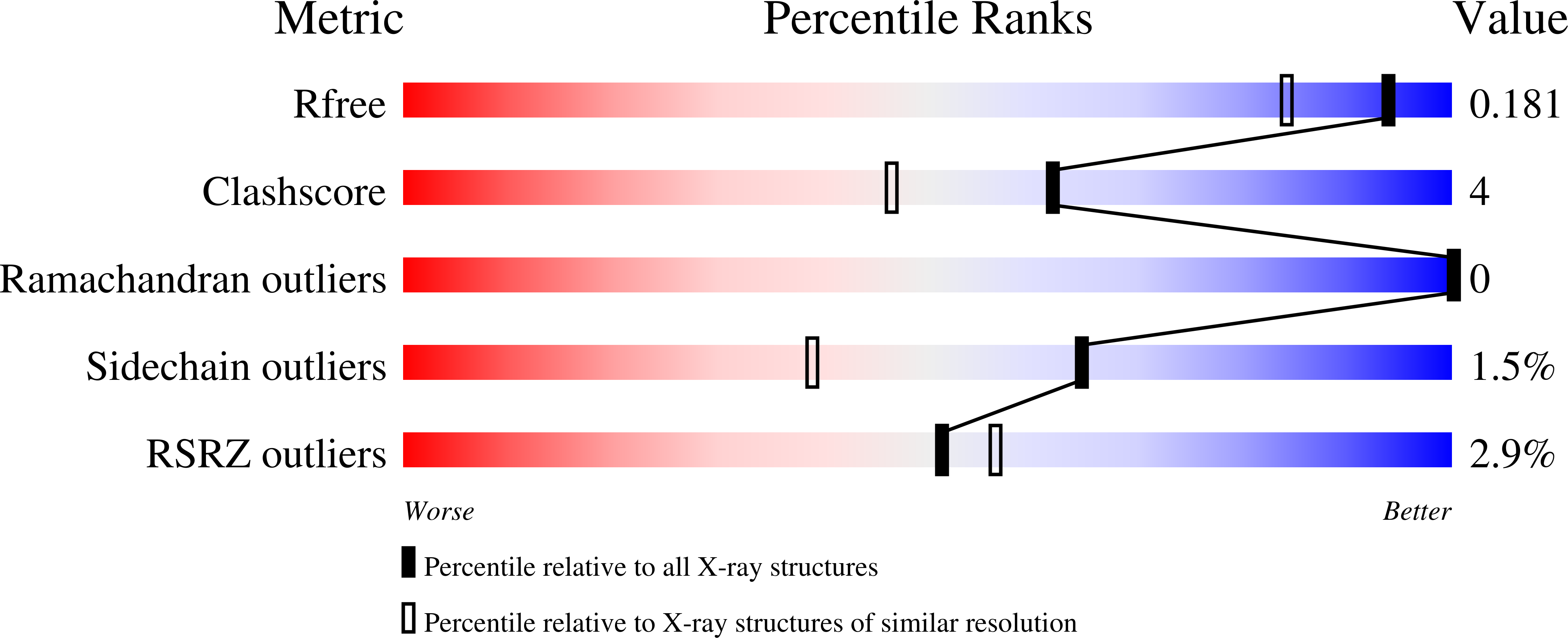A Complete Structural Description of the Catalytic Cycle of Yeast Pyrophosphatase.
Oksanen, E., Ahonen, A.K., Tuominen, H., Tuominen, V., Lahti, R., Goldman, A., Heikinheimo, P.(2007) Biochemistry 46: 1228-1239
- PubMed: 17260952
- DOI: https://doi.org/10.1021/bi0619977
- Primary Citation of Related Structures:
2IHP, 2IK0, 2IK1, 2IK2, 2IK4, 2IK6, 2IK7, 2IK9 - PubMed Abstract:
We have determined the structures of the wild type and seven active site variants of yeast inorganic pyrophosphatase (PPase) in the presence of Mg2+ and phosphate, providing the first complete structural description of its catalytic cycle. PPases catalyze the hydrolysis of pyrophosphate and require four divalent metal cations for catalysis; magnesium provides the highest activity. The crystal form chosen contains two monomers in the asymmetric unit, corresponding to distinct catalytic intermediates. In the "closed" wild-type active site, one of the two product phosphates has already dissociated, while the D115E variant "open" conformation is of the hitherto unobserved two-phosphate and two-"bridging" water active site. The mutations affect metal binding and the hydrogen bonding network in the active site, allowing us to explain the effects of mutations. For instance, in Y93F, F93 binds in a cryptic hydrophobic pocket in the absence of substrate, preserving hydrogen bonding in the active site and leading to relatively small changes in solution properties. This is not true in the presence of substrate, when F93 is forced back into the active site. Such subtle changes underline how low the energy barriers are between thermodynamically favorable conformations of the enzyme. The structures also allow us to associate metal binding constants to specific sites. Finally, the wild type and the D152E variant contain a phosphate ion adjacent to the active site, showing for the first time how product is released through a channel of flexible cationic side chains.
Organizational Affiliation:
Structural Biology and Biophysics, Institute of Biotechnology, P.O. Box 65, University of Helsinki, FIN-00014 Helsinki, Finland.

















